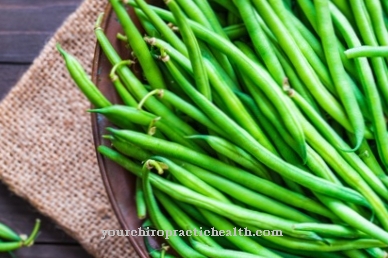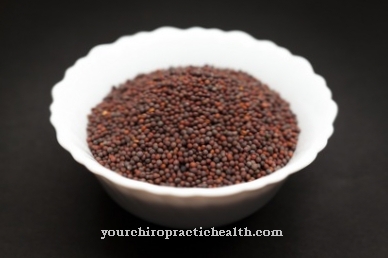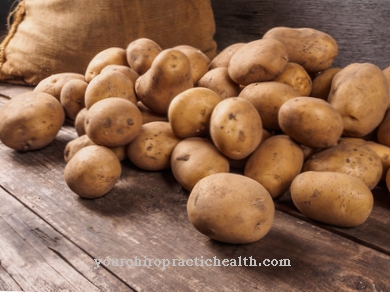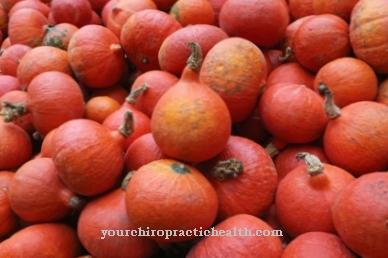At Teff, also called Dwarf millet is known, it is a power grain that really has it all. Teff inspires with valuable ingredients that have a variety of positive effects on health.
What you should know about teff

Teff is currently on everyone's lips, because many people, including celebrities, have discovered the coveted grain, which belongs to the dwarf millet, for themselves. Teff has particularly small grains: around 150 grains together make about the size of a grain of wheat.
One teff plant produces around 10,000 grains. These are as tiny as poppy seeds. Since peeling the mini granules would be too laborious, they are generally processed whole. The Teff products are rightly called "whole grain". Teff originally comes from Ethiopia, where it has been grown for more than 5000 years. Here the grain has prevailed mainly because it can survive without a lot of water and direct sunlight. Teff is extremely undemanding and grows on very wet, but also very dry soils, even where nothing else thrives. A distinction is made between white, red and brown teff. The white variant is the most expensive to grow.
However, the red grains are more ferrous and the brown ones are the most nutritious. In North Africa, grains and flour from teff have always been used for cooking and baking. Teff flour has also been used for a long time in the production of gluten-free pasta, bread and baked goods. On the one hand, teff is relatively tasteless, but still has a slightly nutty aroma. The grain tastes pleasantly sweet. Teff is available all year round.
Importance to health
Teff convinces with numerous positive properties. As small as the granules are, they contain many important minerals, especially silica, which plays a crucial role in hair and nails. The iron content in teff is also high, which makes the grain ideal for vegans and vegetarians in particular.
Iron is also important for blood formation and helps with chronic fatigue. Thanks to the high content of iron, calcium and zinc, the oxygen can be bound faster, which significantly improves endurance and concentration. The trace elements and antioxidants it contains support the healing and repair mechanisms in the body's cells. This provides protection against infections, for example, and malfunctions are regulated in order to prevent the formation of cancer cells. The fiber content in teff is also remarkably high: just 100 grams cover almost the entire daily requirement of around 30 grams.
The mini-grain teff is so productive that the energy in the form of glucose can be made available for a long time. This avoids hunger pangs, because the blood sugar level remains constant, while it behaves differently when eating wheat products. Since teff does not contain any gluten, people who suffer from gluten intolerance can tolerate it well. In general, dwarf millet is easy to digest and particularly digestible. Therefore, teff is suitable as a light food for a sensitive stomach and intestine.
The 100% gluten-free flour made from teff is currently the healthiest one you can buy and is ideal for the following people: athletes, diabetics, vegans, vegetarians and people suffering from gluten intolerance. Due to the composition of the nutrients, teff is said to have a preventive effect against diabetes. Of course, people who have no complaints are also allowed to use this healthy flour. The body will thank the consumption of teff with more energy as well as better blood values.
Ingredients & nutritional values
| Nutritional information | Amount per 100 gram |
| Calories 367 | Fat content 2.4 g |
| sodium 12 mg | |
| potassium 427 mg | carbohydrates 73 g |
| Fiber 8 g | protein 13 g |
What makes teff so healthy are the valuable ingredients. It contains a lot Iron and, compared to other grains, also have a higher content of potassium, calcium and other essential minerals. The composition of the amino acids in Teff is also outstanding. It is even higher than the value of egg white.
Due to the protein composition, all minerals, especially iron, are optimally available. The high lysine content is just as remarkable. The excellent combination of calcium and lysine is of vital importance in many respects, for example for the growth, development and regeneration of muscle tissue, bones and tendons. The leucine contained in teff supports the burning of fat and prevents muscle wasting.
Intolerances & allergies
If teff is to be prepared raw, for example for a salad, it is important that the grain is well soaked in advance, covered with water. This makes it swell up and easier to digest. In addition, the teff grains must be rinsed thoroughly with hot water before they are cooked, because the fatty acids that escape during husking can lead to a slightly bitter taste. Otherwise, teff is generally well tolerated. In addition, it is gluten-free and therefore very suitable for allergy sufferers who react to gluten.
Shopping & kitchen tips
Teff is available in different varieties, such as whole grains, flakes and flour. It can be bought in organic shops, health food stores, in some drug stores and on the Internet. In terms of storage, teff, like all grains, prefers cool and dry.
Teff products should always be stored in an airtight packaging, for example in a can or a screw-top jar. As far as preparation is concerned, cooking teff is quick because the grain is done in 15 minutes. Thoroughly rinsing the teff granules with hot water in a sieve wash out the bitter substances contained in the teff.
Preparation tips
The application possibilities of the power grain Teff are very versatile. As a whole grain, it is very well suited for numerous sweet and savory dishes, for example for porridge, casseroles, flammeri, soups and patties, but teff can also be used to thicken sauces. The flour that is ground from teff is used in Ethiopia as the ideal basis for the soft flatbread, which is known as "injera".
The preparation takes place in the pan. Of course, other bread can also be made with the teff flour. It is also suitable for baking cakes, biscuits, pastries, pancakes and pizza dough. Although the teff flour does not contain any gluten, the dough is good and stable. The teff flakes bring a good change in the morning muesli. They can also be used for baking or thickening sauces and soups. There are hardly any limits to the possible uses of teff. It tastes very good and can be turned into numerous different delicacies. Teff can be used like ordinary wheat flour for cooking and baking.













.jpg)

.jpg)
.jpg)











.jpg)